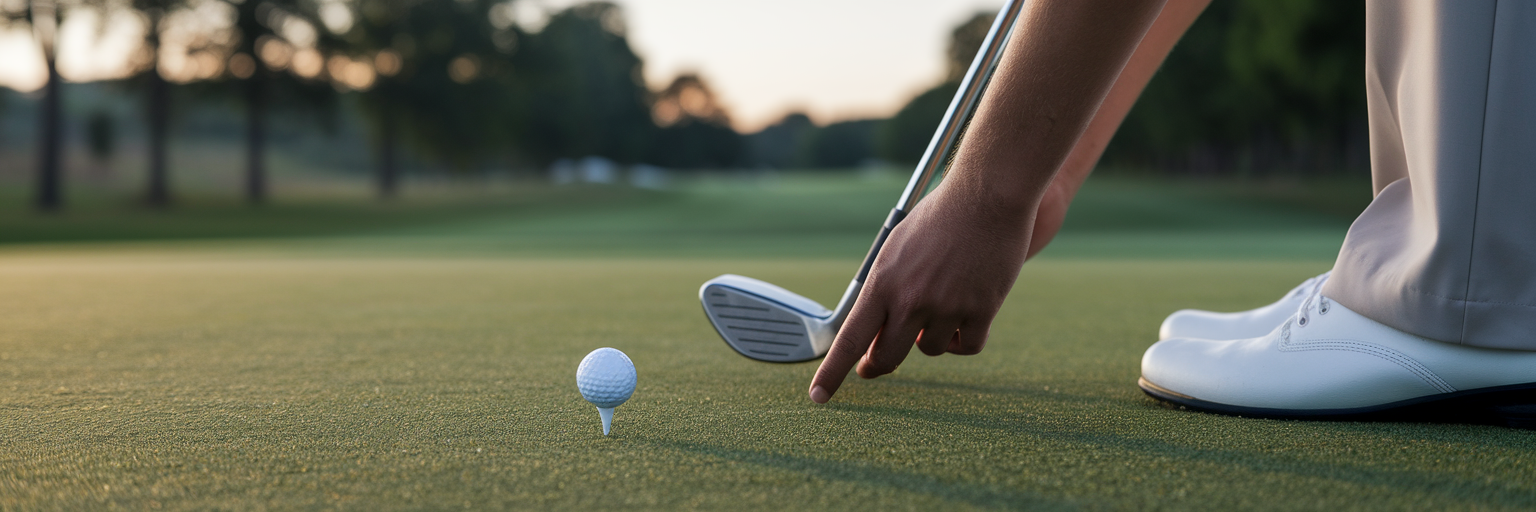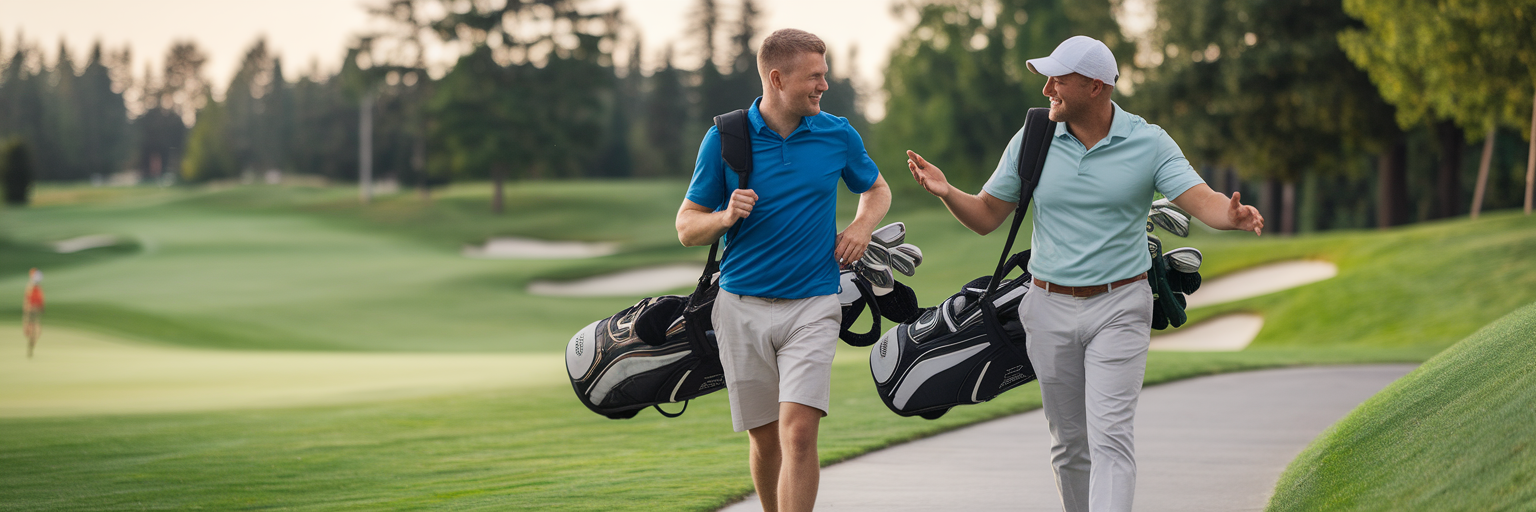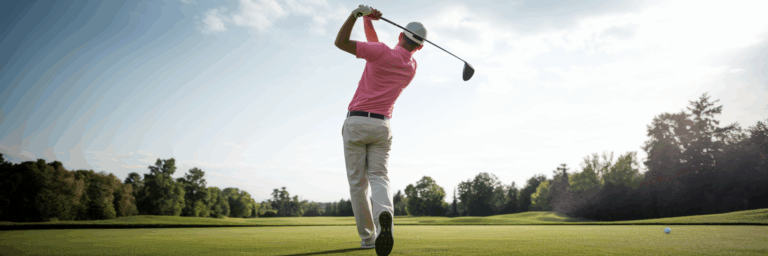How to Build Confidence as a Beginner Golfer
That feeling of standing on the first tee, with others watching, is something almost every golfer has experienced. The quiet pressure to hit a good shot, remember the rules, and just look like you belong can be intense. It’s a universal part of starting the sport, a shared memory for players at every level. But here’s the truth: confidence isn’t something you’re born with. It’s a skill you build, one swing at a time.
Confidence grows from patience, practice, and the right mindset. This guide will walk you through practical mental strategies and on-course habits to help you feel more comfortable and capable. Learning how to play golf is a journey of small, manageable achievements, not a single, intimidating challenge. Let’s start building that self-belief from the ground up.
Master Your Mindset Before You Swing
Before you even address the ball, the most important work happens in your head. Your thoughts directly influence your physical performance, so developing a strong mental game is the first step toward beginner golf confidence. It’s not about complex psychology, but about simple, repeatable disciplines that quiet the noise and let you focus. We’ve all had that internal voice of doubt creep in. The key is learning how to manage it.
Here are four fundamental golf mental game tips to practice:
- Visualize Success: Close your eyes and mentally rehearse the shot you want to hit. Picture the ball’s flight path, see it landing exactly where you intend, and feel the smooth tempo of your swing. This isn’t just wishful thinking; it’s a way of programming your mind and body for a positive outcome.
- Use Positive Self-Talk: The words you say to yourself matter. Instead of thinking, "Don't hit it in the water," reframe it to, "Focus on a smooth swing toward the center of the fairway." As a guide from Stix Golf on golf psychology points out, positive self-talk is one of the most effective ways to build resilience against bad shots.
- Manage Your Expectations: It’s easy to get discouraged when you compare your first few rounds to a seasoned player’s game. The only person you should be competing against is yourself from yesterday. Did you make better contact than last week? That’s a win.
- Stay in the Present: Golf is a game of recovery. A bad shot is just one shot. Once it’s over, it’s over. Take a deep breath, walk to your next shot, and reset your focus. Dwelling on the past only sabotages the present moment.
Develop Practical On-Course Routines
While the previous section focused on your internal thoughts, this one is about the actionable habits that translate those thoughts into consistent performance. A pre-shot routine is your best friend on the course. It’s a simple sequence of actions you perform before every swing, which helps calm your nerves and makes the motion feel more automatic under pressure. Think of it as a comforting ritual that tells your brain, "Okay, it's time to execute."
Beyond the routine, how you practice is just as important. Instead of aimlessly hitting a bucket of balls at the driving range, try practicing with purpose. Dedicate twenty minutes to chipping from a tricky lie or focus solely on 30-foot putts. This targeted approach is one of the most effective ways for how to get better at golf because it builds specific, measurable skills you can rely on during a round. This focus carries over to the course, where the "one shot at a time" philosophy becomes a practical strategy for staying grounded and managing the inevitable ups and downs of a round.
| Step | Action | Purpose (The 'Why') |
|---|---|---|
| 1. Assess & Visualize | Stand behind the ball and pick a specific, small target. | Commits your mind to a clear intention and desired outcome. |
| 2. Rehearse the Feel | Take one or two smooth, unhurried practice swings. | Builds muscle memory and rehearses the tempo for the shot. |
| 3. Set Up & Align | Step up to the ball, set your feet, grip the club, and align your body. | Establishes a stable and consistent foundation for the swing. |
| 4. Look & Swing | Glance at the target one last time, then swing without hesitation. | Transfers your focus from mechanics to the target itself. |
Embrace the Learning Process
Lasting confidence comes from accepting that golf is a journey of continuous learning. It’s crucial to normalize mistakes. Every golfer, from a weekend player to a major champion, hits poor shots. A topped ball or a sliced drive isn’t a failure; it’s feedback. It’s the game telling you what needs adjustment. Viewing each mis-hit as a learning opportunity removes the sting and turns frustration into productive analysis.
This mindset is supported by setting the right kind of goals. Instead of fixating on a final score, which adds unnecessary pressure, focus on process-oriented goals that are within your control. These are some of the most valuable golf tips for new players.
- Ineffective Goal: "I need to shoot under 100 today."
- Effective Goal: "I will make solid contact on half of my drives."
- Ineffective Goal: "I won't three-putt any green."
- Effective Goal: "I will try to two-putt on at least three greens."
This approach makes progress feel more attainable. Finally, make it a habit to celebrate your small victories. Did you hit a pure iron shot that landed softly on the green? Did you successfully chip out of a bunker? Did a long putt finally drop? Acknowledge and enjoy these moments. They are the building blocks of genuine, lasting self-belief.
Find Support and Fuel Your Performance
Confidence isn't just built on the course; it's also nurtured by your environment and how you care for yourself. The social aspect of golf can be a powerful tool for building confidence on the course. Playing with supportive friends who cheer for your good shots and laugh off the bad ones makes the game more fun and less intimidating. Joining a beginner's clinic or finding a mentor can also provide a safe space to learn and ask questions without feeling judged.
Your physical state is just as important. Have you ever felt your focus drift on the back nine? That’s often due to fatigue or dehydration. Packing a banana or a granola bar and sipping water throughout your round prevents energy crashes and keeps your mind sharp. As noted by Keiser University's College of Golf, focusing on self-care habits like proper diet is an integral part of developing confidence. Feeling physically prepared also comes from your gear. This isn’t about having the most expensive clubs or trendiest outfits. It’s about wearing comfortable clothes and having the right equipment, which reduces distractions and helps you feel like you belong.
- Play with a supportive group to make the experience enjoyable.
- Stay hydrated and energized to maintain physical and mental stamina.
- Wear appropriate attire to feel comfortable and prepared.
Your Path to Enjoying the Game
Building confidence as a new golfer is a skill, just like chipping or putting. It’s developed through a positive mindset, consistent on-course routines, and a willingness to learn from every shot, good or bad. Remember that the ultimate goal is to enjoy your time on the course—the fresh air, the personal challenge, and the company of others. Perfection is an impossible standard, but progress is always within reach.
Focus on small improvements and celebrate every step forward. As you continue to learn how to play golf, know that you have a supportive guide for every part of your journey. Keep practicing, stay positive, and most importantly, have fun out there. You’ve got this.









